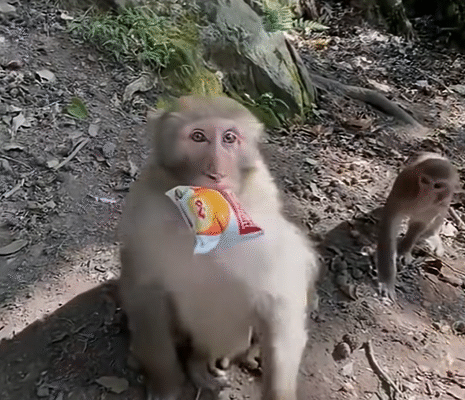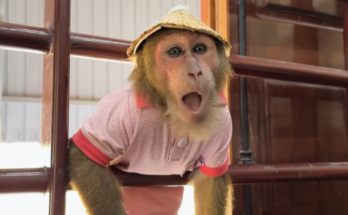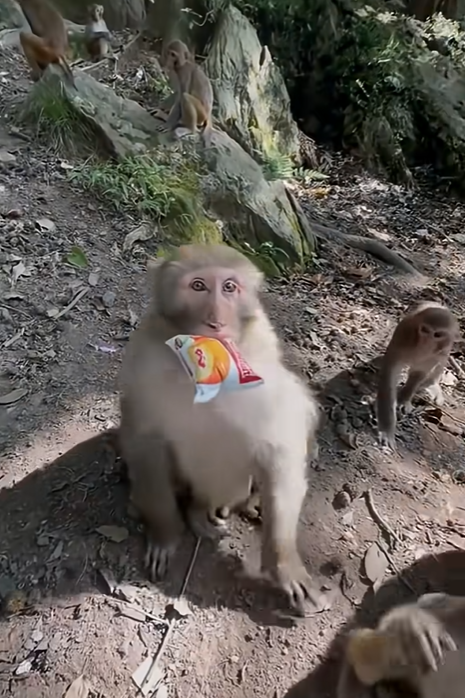
There’s something irresistibly funny, heartwarming, and chaotic about monkeys. Their expressive faces, quick movements, and unpredictable behavior make them both fascinating and endlessly entertaining to watch. Among all animals that interact with humans, monkeys seem to blur the line between wild and familiar — their intelligence and humor often mirror our own. Yet it’s their silliness that captures our hearts the most.
In many parts of the world, humans and monkeys coexist closely. From temple grounds in India and Thailand to tropical islands in Indonesia, monkeys have learned how to live side-by-side with people — often with hilarious results. These furry little mischief-makers have become masters at stealing snacks, photobombing tourists, and even imitating human behavior in the most surprising ways.
1. The Temple Thieves of Asia
One of the most famous spots for silly monkey antics is the Monkey Temple in Lopburi, Thailand. Hundreds of long-tailed macaques roam freely through ancient ruins and city streets, acting as if they own the place. Tourists arrive with fruit, drinks, and cameras — and the monkeys are always ready for action.
Imagine a group of visitors holding bags of bananas. The monkeys spot them instantly. Within seconds, it’s chaos! Dozens of monkeys dash in from every direction, some leaping onto shoulders, others tugging at clothes. They grab bananas, sunglasses, and even hats, then scurry up to rooftops to eat their prizes triumphantly.
Locals have learned the monkeys’ tricks well. Shopkeepers often use slingshots — not to harm them, but to scare them away. Still, the monkeys always return, cleverer than before. Some have even learned to trade stolen items. A tourist might lose a pair of sunglasses, only to see a monkey sitting on a wall, holding them hostage. Offer a banana, and the monkey graciously returns the glasses. A perfect exchange!
These temple monkeys aren’t just mischievous — they’re remarkably smart. They recognize regular visitors, remember who feeds them, and even pose for selfies. It’s a comedy show every day, where the audience and the performers keep switching places.
2. The Coconut Climbers and the Banana Bandits
In tropical regions like Bali, Sri Lanka, and the Philippines, monkeys often live near resorts and beaches. They’ve become experts in interacting with humans — sometimes too much!
A classic scene: a family enjoying breakfast outdoors. The table is filled with fruit, pancakes, and juice. Then — a flash of fur! A monkey swoops down, snatches a banana, and sits on the fence eating it like a thief caught red-handed. When the family gasps, he just stares back confidently, as if to say, “You weren’t eating this anyway.”
Monkeys have also learned to open zippers and unfasten Velcro. Tourists who leave their bags unattended often return to find monkeys digging through them, inspecting sunscreen, snacks, or even wallets. Once, a tourist in Bali found a monkey holding her phone — not chewing it, not running away, but taking selfies! The photos later showed the monkey making silly faces, sticking its tongue out, and curiously examining the camera lens.
These moments show just how human-like they can be — not in appearance, but in spirit. The curiosity, playfulness, and sense of humor are pure gold.
3. The Jungle Jokers and Their Gentle Moments
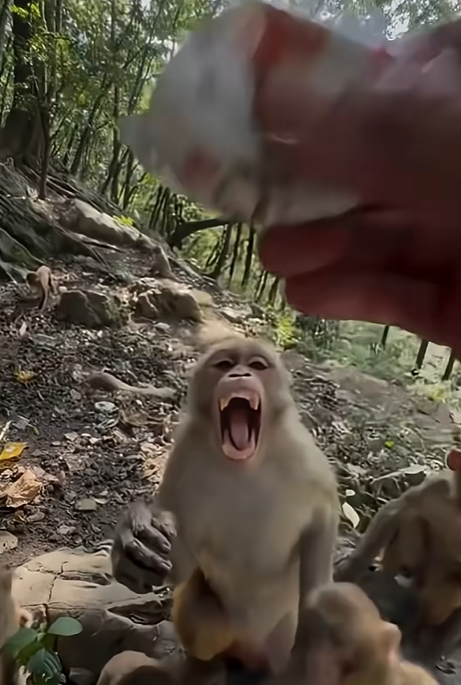
Not all monkey–human interactions are mischievous. Some are surprisingly gentle, emotional, and profound. In certain wildlife sanctuaries and rescue centers, monkeys that were once abandoned or injured are cared for by kind-hearted humans. Over time, they develop bonds that are deep and full of trust.
One touching story comes from a sanctuary in South America, where a rescued capuchin monkey named Luna became inseparable from her caretaker, Daniel. Every morning, Luna would wait by the gate, clapping her hands when Daniel approached. When he was sad, she would pat his cheek softly, as if to comfort him.
But of course, she also had her silly side — stealing his pen while he was writing, then running up a tree and dropping it only when he offered her a grape. Monkeys seem to understand the balance between affection and fun. They love to test limits, just like children do.
In another case, a group of rescued macaques were introduced to yoga sessions led by a volunteer. The sight was unforgettable — the monkeys sitting beside humans on mats, mimicking stretches, tilting their heads curiously, and occasionally climbing onto people’s backs during downward dog. It was impossible not to laugh, yet also strangely peaceful.
4. When Monkeys Join the Modern World
With social media and smartphones everywhere, monkey–human interactions have become viral sensations. Videos of silly monkeys now dominate platforms like TikTok and YouTube, where millions watch them doing things that seem almost human — eating with spoons, wearing sunglasses, or dancing to music.
But these moments aren’t always about entertainment. They also reveal how adaptable monkeys are. They watch us carefully, learn behaviors, and often imitate them just for fun. Some can open doors, use tools, and even understand basic cause and effect — “If I push this button, the human laughs. If I jump on their head, they scream!”
Monkeys in tourist spots have even learned to recognize smartphones as valuable. They know people will give food to get their phones back. It’s clever, mischievous, and hilarious all at once — the perfect example of monkey logic at work.
5. Funny Encounters That Melt Hearts
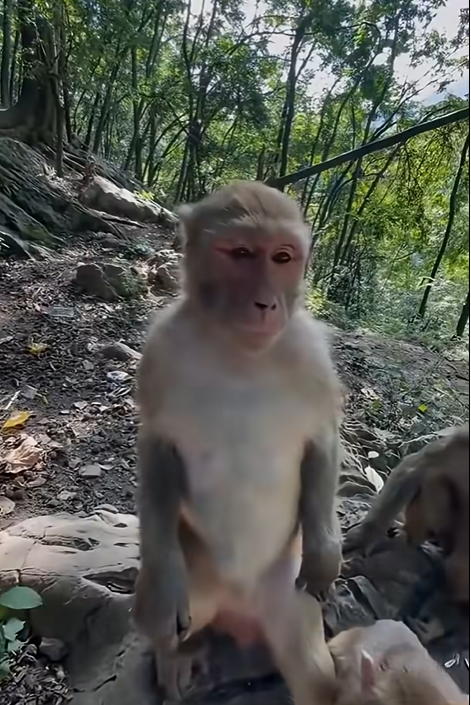
Across the world, people have shared countless stories of funny encounters with monkeys that left them laughing for hours.
- A traveler in India once offered a banana to a monkey — but when she peeled it first, the monkey looked insulted and refused to take it, as if saying, “I can do it myself!”
- In Cambodia, a baby monkey hugged a tourist’s leg tightly, refusing to let go until she shared her fruit juice.
- At a zoo in Japan, a monkey mimicked a child’s dance moves, spinning in circles until both of them fell down laughing.
- In Africa, a group of baboons stole an entire picnic basket, only to sit together under a tree and share the food politely, passing it around like a family dinner.
These moments remind us that humor and connection don’t always need words. Sometimes, a look, a gesture, or a shared laugh can bridge the gap between species.
6. Lessons from the Silly Ones
While monkeys often seem like pranksters, their behavior teaches us something profound — joy. They live in the present moment. They don’t worry about tomorrow or regret yesterday. When they play, they really play. When they’re curious, they explore without fear. And when they connect, it’s pure and honest.
Humans often overthink everything, but monkeys remind us that sometimes life’s best moments come from being spontaneous — jumping into the unknown, finding laughter in chaos, and embracing the silly side of life.
7. The Unspoken Bond
At the end of the day, humans and monkeys share a special connection. We see ourselves in them — our emotions, our playfulness, our intelligence. They remind us of where we came from and what we sometimes forget: that joy doesn’t need to be complicated.
So next time you see a monkey — whether it’s in a sanctuary, a video, or on a temple wall — take a moment to watch. You’ll see more than just an animal. You’ll see a tiny mirror of our own spirit — wild, funny, curious, and full of life.
And maybe, if you’re lucky, that monkey will do something completely ridiculous that makes you laugh so hard you forget your worries. Because that’s what silly monkeys do best — they make us feel alive. 🐒💛😂
The End.
